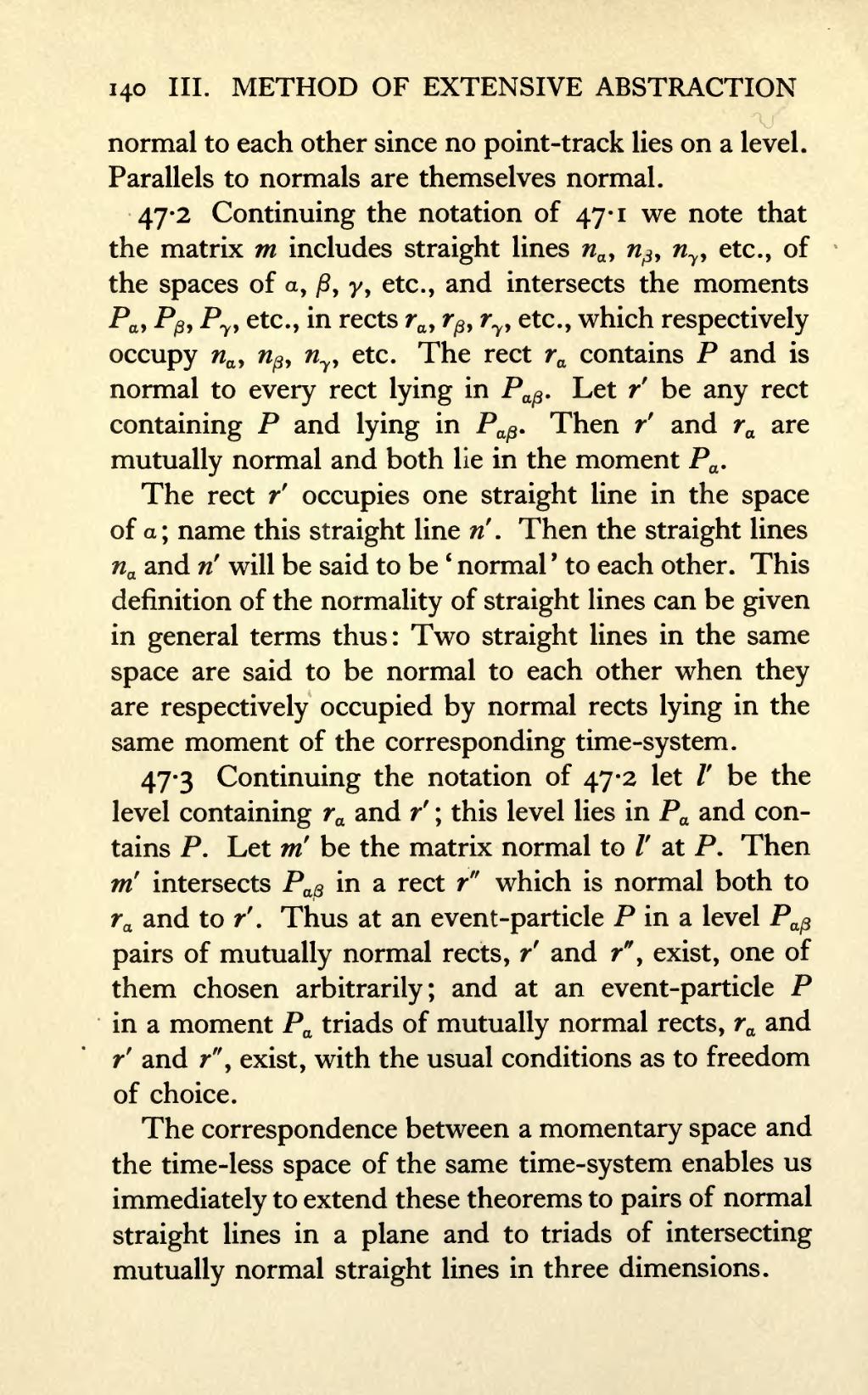normal to each other since no point-track lies on a level.
Parallels to normals are themselves normal.
47.2 Continuing the notation of 47.1 we note that the matrix m includes straight lines nα, nβ, nγ, etc., of the spaces of α, β, γ, etc., and intersects the moments Pα, Pβ, Pγ, etc., in rects rα, rβ,rγ, etc., which respectively occupy nα, nβ, nγ, etc. The rect rα contains P and is normal to every rect lying in Pαβ. Let r' be any rect containing P and lying in Pαβ. Then r' and rα are mutually normal and both lie in the moment Pα. The rect r occupies one straight line in the space of α; name this straight line n'. Then the straight lines nα and n' will be said to be normal to each other. This definition of the normality of straight lines can be given in general terms thus: Two straight lines in the same space are said to be normal to each other when they are respectively occupied by normal rects lying in the same moment of the corresponding time-system.
47.3 Continuing the notation of 47.2 let l' be the level containing rα and r'; this level lies in Pα and con- tains P. Let m' be the matrix normal to l' at P. Then intersects in a rect which is normal both to and to . Thus at an event-particle in a level pairs of mutually normal rects, and , exist, one of them chosen arbitrarily; and at an event-particle in a moment triads of mutually normal rects, and and , exist, with the usual conditions as to freedom of choice.
The correspondence between a momentary space and the time-less space of the same time-system enables us immediately to extend these theorems to pairs of normal straight lines in a plane and to triads of intersecting mutually normal straight lines in three dimensions.








